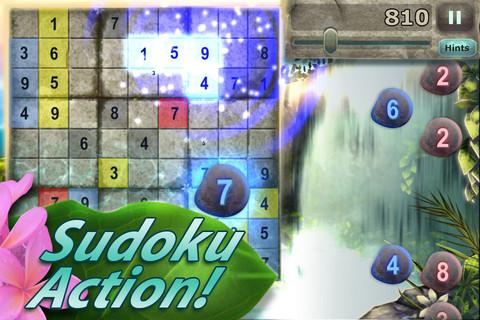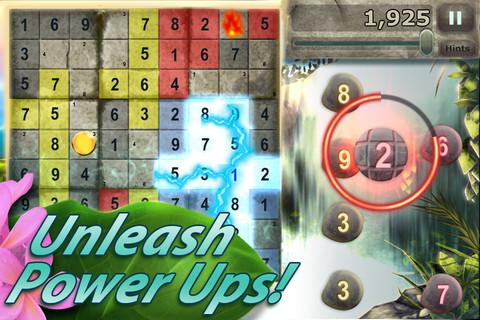- Wondering how to get Monopoly GO! free rolls? Well, you’ve come to the right place. In this guide, we provide you with a bunch of tips and tricks to get some free rolls for the hit new mobile game. We’ll …
Best Roblox Horror Games to Play Right Now – Updated Weekly
By Adele Wilson
Our Best Roblox Horror Games guide features the scariest and most creative experiences to play right now on the platform!The BEST Roblox Games of The Week – Games You Need To Play!
By Sho Roberts
Our feature shares our pick for the Best Roblox Games of the week! With our feature, we guarantee you'll find something new to play!Type Soul Clan Rarity Guide – All Legendary And Common Clans Listed!
By Nathan Ball
Wondering what your odds of rolling a particular Clan are? Wonder no more, with my handy Type Soul Clan Rarity guide.
Sudoku Rush Review
Hothead games have had a bit of a weird trajectory in the game making territory. They busted out of the game with the Penny Arcade game, then followed it up with Monkey Island alum Ron Gilbert’s Deathspank. They then turned to iOS devices with Chromanoids and Bunny the Zombie Slayer. They’ve continued this mobile trend with their own take on classic number puzzles in Sudoku Rush.

Sudoku Rush is a valiant effort to supercharge sudoku, but it loses the heart of the game in the process
Hothead games have had a bit of a weird trajectory in the game making territory. They busted out of the game with the Penny Arcade game, then followed it up with Monkey Island alum Ron Gilbert’s Deathspank. They then turned to iOS devices with Chromanoids and Bunny the Zombie Slayer. They’ve continued this mobile trend with their own take on classic number puzzles in Sudoku Rush.
But I’m just not sure the style of sudoku here will appeal to the average sudoku player. As a number puzzle, sudoku is a slow, methodical game of whittling down possible answers until you’re left with just one possibility. So, really, the opposite of rushing like the title suggests. As you fill in blocks, columns and rows, the possibilities diminish and the puzzle starts to fill itself in almost organically. Sudoku Rush sort of removes all of that.

The typical sudoku setup is the same as always. Nine grids made up of nine squares each, some with numbers filled in. Your task as always is to fill in the rest of the numbers. Each grid, each row and each column will include the numbers 1-9, never repeating. These simple rules mean that only one number can live in each space, and it’s your task to figure out which each space’s number is.
In Sudoku Rush, you fill in those numbers as they fall down the right side of the screen in a waterfall. If you need a 5 you grab a five as it passes and drag it to the square you want. If it’s correct it takes its place, and if it’s wrong it just goes away. The numbers are a few different colors and paint adjacent uncolored numbers on the grid to match, giving you bonus points for grouping large amounts of the same color together.
In addition, some of the numbers gives you powerups for using them. You might get a hint of what the numbers surrounding the one you just placed are, or it might take its color and spread it out further than normal. You can buy upgrades and more powerups using in-game money earned while playing the game.
The problem really is in the waterfall mechanic. Instead of working out the answer to a space and writing it in you have to wait for that number to flow past so you can grab it, sometimes waiting while piece after piece after piece float by. On the opposite side, you can grab pieces at random and then quickly figure out a place to put it since you only get a short amount of time before it disappears on you.

Neither method play into what makes sudoku a satisfying experience. I either felt like I was just sitting around waiting for luck to present me with a piece I needed, or I was rushed when trying to be proactive and grabbing a piece to find a place for. While the powerups made some plays interesting, I think the game’s intention and what sudoku wants to be ends up just being a push and pull between the two methodologies just leaves the player in the middle. It’s an uncomfortable spot to be in, right between the Sudoku and the Rush.

The good

The bad
More articles...
Monopoly GO! Free Rolls – Links For Free Dice
By Glen Fox
Wondering how to get Monopoly GO! free rolls? Well, you’ve come to the right place. In this guide, we provide you with a bunch of tips and tricks to get some free rolls for the hit new mobile game. We’ll …Best Roblox Horror Games to Play Right Now – Updated Weekly
By Adele Wilson
Our Best Roblox Horror Games guide features the scariest and most creative experiences to play right now on the platform!The BEST Roblox Games of The Week – Games You Need To Play!
By Sho Roberts
Our feature shares our pick for the Best Roblox Games of the week! With our feature, we guarantee you'll find something new to play!Type Soul Clan Rarity Guide – All Legendary And Common Clans Listed!
By Nathan Ball
Wondering what your odds of rolling a particular Clan are? Wonder no more, with my handy Type Soul Clan Rarity guide.







